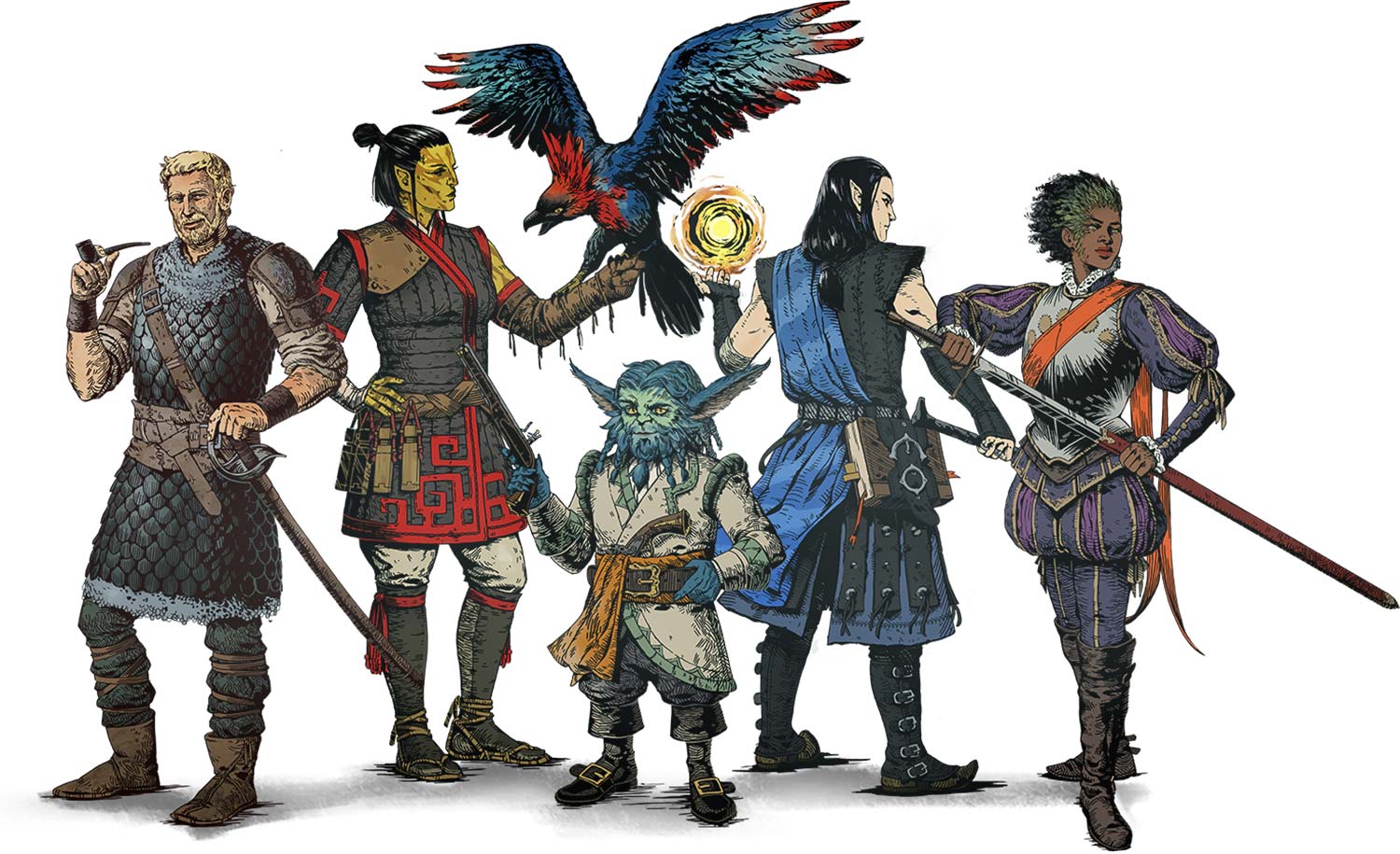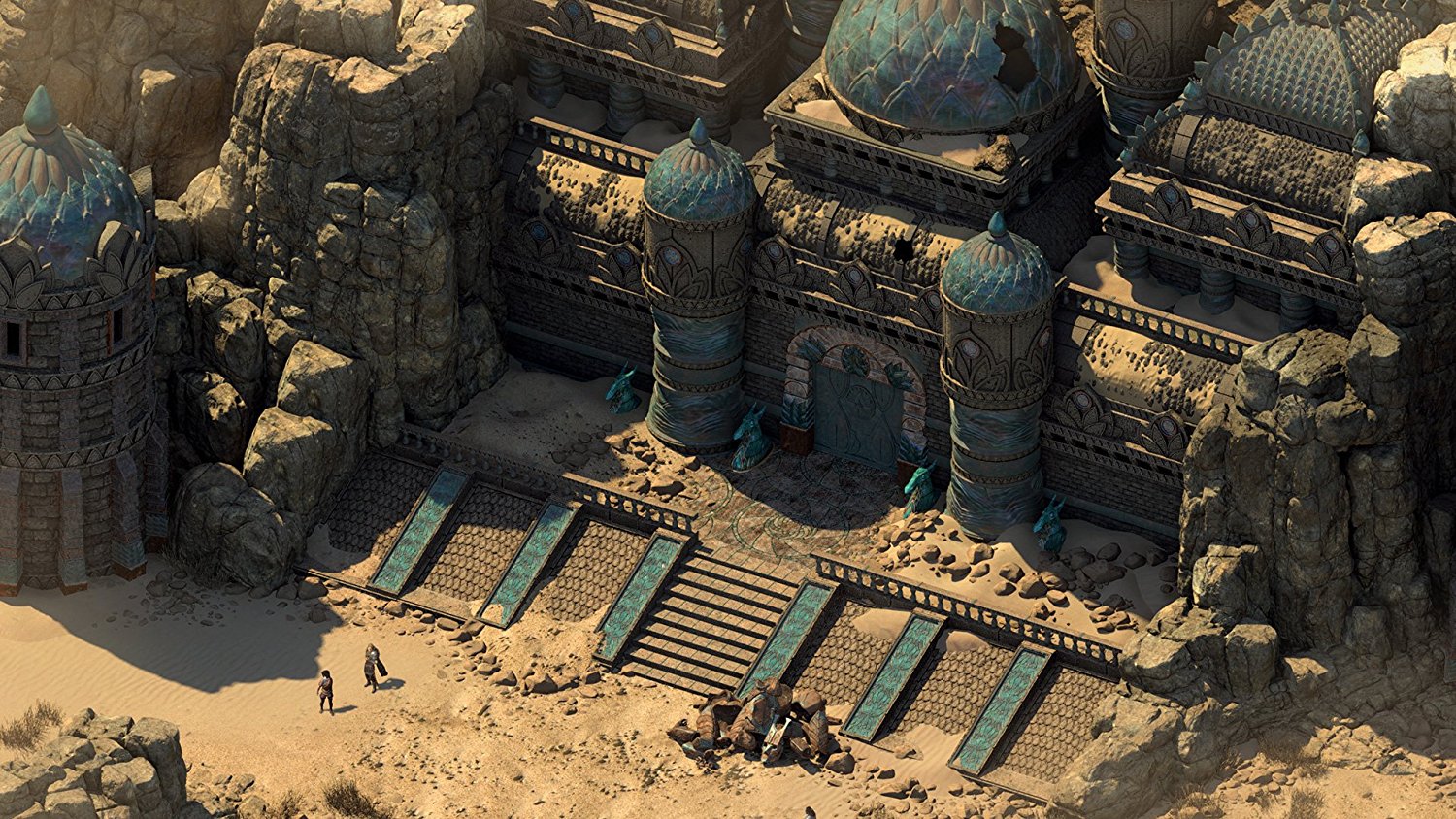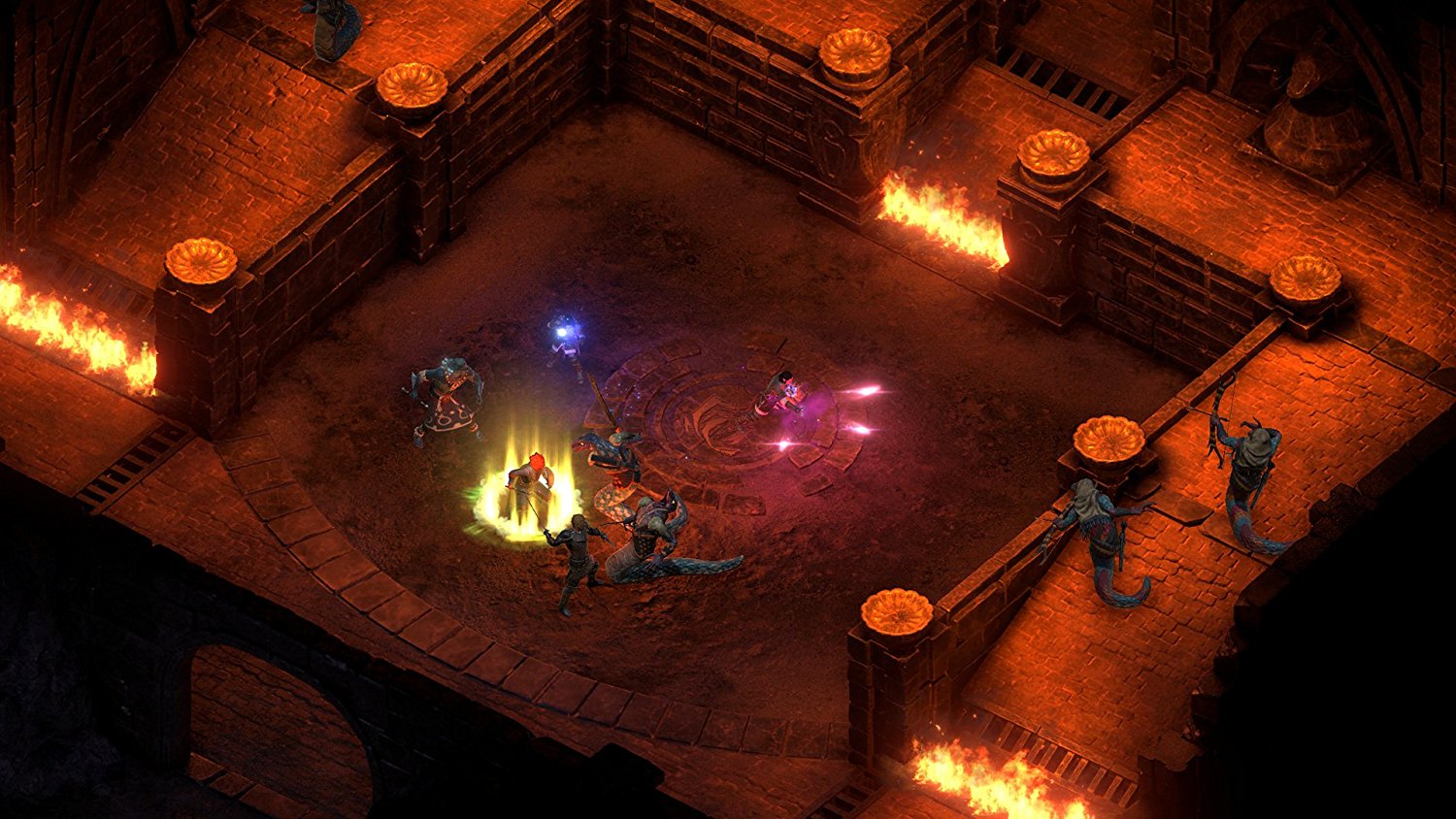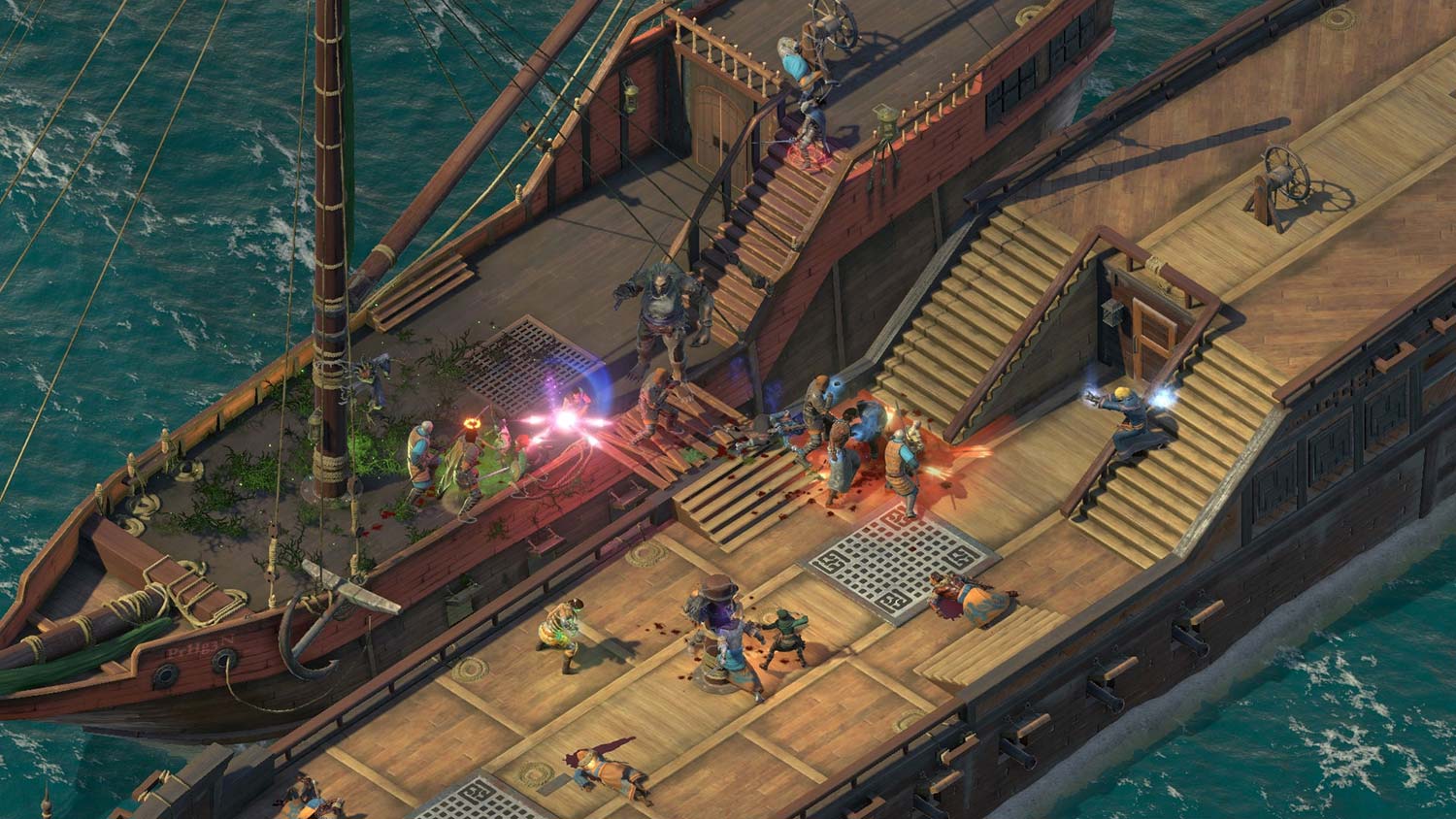Tom's Guide Verdict
Everything in Pillars of Eternity II: Deadfire is out to delight the player, and just about everything succeeds.
Pros
- +
Engrossing, adaptive setting
- +
Meaningful choices
- +
Tight combat and party-building
- +
Beautiful sound and visuals
- +
Intuitive gameplay
Cons
- -
Tedious, under-explained ship management and combat
Why you can trust Tom's Guide
"I don't think much of our profession, but contrasted with respectability, it is comparatively honest." – The Pirate King, The Pirates of Penzance
Pillars of Eternity II: Deadfire is all about duality. (The "II" in the title should be a dead giveaway.) The game is a rollicking high-seas pirate adventure; it's also a weighty fantasy epic. You'll spend about half the game exploring cities, dungeons and wildernesses, and half in your ship, managing crewmembers and doing battle with enemy vessels. Each party member even comes with two potential classes. Obsidian Entertainment, it seems, wanted to make it clear that Pillars of Eternity II is twice as ambitious as its predecessor.
The veteran RPG maker's gamble has paid off in spades. In spite of a few abstruse game mechanics, Pillars of Eternity II is probably the best isometric PC-style RPG since, well, the first Pillars of Eternity. The world is huge and interesting, the gameplay is gripping and the story and characters respond in meaningful ways to the myriad choices at your disposal. From its gorgeous graphics to its sweeping score, everything in Pillars II is out to delight the player, and just about everything succeeds.
Gameplay: Variety is the spice of life
Like its predecessor, PIllars II takes the isometric RPG formula pioneered by BioWare and Black Isle back in the '90s, then polishes it to a mirror shine. If you've played a PC-style RPG before, you know the drill: Create a character, gather a party, complete quests, explore the world and make tough choices that could shape the fate of the entire world. No pressure.
The first thing you'll notice about the game is its tremendous variety. Races for your playable character include versatile humans, semiaquatic amaua, short and fuzzy orlans, in addition to fantasy mainstays like dwarves and elves. Classes get even more involved, with standard choices like Fighter and Wizard existing alongside more inventive options like Cipher (something between a psion and a sorcerer, in D&D terms) and Chanter (like a bard, but more useful).

However, you don't just pick a race and class and call it a day. Your place of origin also affects your backstory and stats, and each class has a handful of specializations. A Fighter, for example, can be either a jack-of-all-trades or fully dedicated to mastering one weapon. A new multiclass option makes characters even more customizable, which veterans will appreciate, and which newcomers will probably want to avoid. Naturally, you can also choose your character's sex, name, voice and portrait.

These options, along with assigning attributes and choosing skills, might be daunting for a newcomer, but Pillars II does a great job explaining what each one does, and which are helpful for your class. Even if you find that you've picked exactly the wrong build for your character, changing your stats and skills is as easy as visiting any inn and plunking down some copper to retrain. Pillars II doesn't want to punish players; it wants them to experiment and have fun.
Get instant access to breaking news, the hottest reviews, great deals and helpful tips.
"Variety" is the game's operating principle well past the starting gate. Characters in the world will respond to you based on your race and class, but as you start to make decisions, they'll also respond based on your reputation. If you're a bruiser who knocks heads first and ask questions later, foes may back down when they see you coming. If you're a patient and diplomatic sort, you may be able to talk your way out of otherwise impossible situations. You can even import a save file from the first game (or re-create one during the prologue), which can affect everything from calling in a favor from the gods, to which characters will (re)join your party.
Pillars II doesn't want to punish players; it wants them to experiment and have fun.
The game doesn't tell you which decisions you make will influence which attributes. As such, your best option is to role-play your character and let the chips fall where they may. You also never know in advance how your actions will affect your standing among the major political powers, or your party members. This makes the whole experience feel organic and unpredictable, rather than simply trying to max out reputation points for in-game rewards.
You can even customize your party members to a much greater extent than before. When a party member first joins, you'll get to select his or her class — and this is such a subtly brilliant design decision, I can't believe I've never seen it before.
MORE: PS4 Games: Our Staff Favorites
For example, when Edér, a warrior from the first game, joined my party, I rolled my eyes; I was playing a sword-and-shield fighter myself, and didn't need a second one. But a pop-up screen informed me that I could make him into a fighter, a rogue, or even a mix of the two (called, appropriately, a "swashbuckler.") Now equipped with two daggers and the ability to disarm traps, a superfluous character from the first game became one of my boon companions in the second.
A pirate head and a pirate heart
Character interactions are a huge part of Pillars II, but they don't represent how you'll actually play the game. A brief prologue reacquaints you with the basic landlubber skills you'll need: Moving from place to place, engaging enemies in combat, talking to townsfolk and completing quests.

As in most isometric RPGs, these processes are as simple as pointing and clicking on the object, person or monster with which you wish to interact. Combat in particular can be a ton of fun. You can sit back and let the competent AI handle things in real time on lower difficulties, but during tough boss fights or on higher difficulty settings, you'll probably need to jump in yourself by pausing and issuing orders.

Every character amasses a ton of active and passive abilities, from closing distances on the battlefield faster, to casting huge fireballs, to sniping enemies from a distance. Managing all of these skills feels satisfying, especially when you see an impossible encounter start to turn in your favor.
Where Pillars II differs from most RPGs, though, is that traversing towns, delving into dungeons, negotiating with non-player characters and fighting foes accounts for only about half of the gameplay. The other half is a high-seas adventure, complete with ship management and naval combat.

Early on, you'll acquire your very own ship, the Defiant. (You can rename it, of course.) From there, you can sail around the gigantic world map at-will, exploring uncharted islands, hunting down notorious pirates for bounties, fighting your way through fierce storms — or simply auto-sailing from one plot location to the next, if you're determined to miss some of the best encounters in the game.
Ship management in Pillars II is a double-edged sword. While it's easily the game's most distinctive feature, it's also convoluted and poorly explained. In order to run your ship, you'll need to recruit crewmembers (who are separate from your party members), buy them food and drinks, keep their morale up, treat their injuries and have them repair the ship. That means you'll need to keep track of a vast variety of resources, then micromanage each one every time you set sail.

For example: Feed your crew on water and hardtack, and their morale will sink like an anchor, but offer them rum and fresh fruit, and they'll fight harder and earn extra experience during ship-to-ship encounters. It's a clever idea, but there are simply too many things to keep track of, and the game barely explains how any of them work before you shove off for the first time. I nearly had a mutiny on my hands before I realized that my crew's injuries were killing the Defiant's morale — and that if I wanted them to heal, I couldn't have them on active duty.
Ship combat is also hard to grasp, and usually more trouble than it's worth. You can deck out (heh) your sloop with all sorts of cannons, sails, flags, armor and lanterns, but anything worthwhile is extremely expensive, and the game doesn't do a great job of explaining how to gauge your chances against an enemy vessel. Ship combat itself is a tedious text-based affair, which involves scrolling through a lot of menus and maneuvering around while waiting for cannons to reload. It's usually better to just straight-up ram an enemy ship and face your foes in the game's much-more-fun regular combat system.
MORE: Our Favorite Gaming Mice for Every Genre
Still, once you figure out the ship's systems and feel comfortable exploring the archipelago, gameplay falls into a comfortable rhythm or finding a new area, seeking out side quests, leveling up a bit, then following one more small thread of the central narrative. Seeing your party grow from a motley crew of strangers into a tightly knit band of friends, slinging powerful spells and wielding powerful weapons, is rewarding in its own right. Returning fans will also be happy to note that this time around, you can romance a handful of party members.
Story: Privateering we will go
Five years after the events of the original game, an enormous statue comes to life under your beloved keep of Caed Nua. A manifestation of the dead god, Eothas, has possessed it, nearly killing you and your party in the process. With the last of your funds, you acquire a ship and set out to follow the statue into the chaotic Deadfire Archipelago.

The central story in Pillars II — chasing a godly statue, trying to reclaim pieces of your soul — is entertaining enough, but it's mostly window dressing for the game's fascinating setting. The Deadfire resembles nothing so much as the 19th-century South Pacific, with colonizers, trading companies, native populations and pirates all working with and against each other.
As you progress through the game, you'll either ingratiate yourself with or alienate yourself from its four major factions: the Valians, the Royal Deadfire, the Huana and the Príncipi. The Valians, Huana and Príncipi are easy enough to understand as parallels for European colonizers, native islanders and pirates, respectively. The Royal Deadfire company adds an interesting twist to the mix, though.

Like the Huana, the Royal Deadfire company comprises aumaua: semiaquatic humanoids who love learning and exploration. However, the Royal Deadfire company has no interest in uplifting its Huana cousins, eagerly exploiting them just as ruthlessly as the Valians. There's no direct real-life parallel to the Royal Deadfire, making it one of the more interesting facets of the game.
In fact, the interplay between the four factions — and their associated questlines — is easily the best thing Pillars II has to offer. You can aid all four, or play them against each other, or completely ignore them, and the region will change in subtle ways, depending on your actions. You can fly their colors on your ship, or maintain your status as a privateer. You can even prey on innocent vessels, if you're of a particularly piratical bent.
MORE: Here Are the Best PC Game Controllers
Pillars II doesn't just have a lot of stuff to do — it has a lot of interesting, meaningful stuff to do, which makes you feel like your party and crew are making a tangible difference in the world around you.
Graphics and sound: Fair and comely
Considering that isometric RPGs don't have to boast outstanding graphics to deliver satisfying gameplay, it's quite impressive just how good Pillars II looks. The level designs are distinct and memorable, from the lush blues and greens of of the overworld, to the eerie purples and browns of forgotten dungeons. Character models are large and detailed; spell effects feel otherworldly and fluid.

Sound effects and voice work are similarly high-quality. Unlike its predecessor, almost every single line of dialogue in Pillars II receives the full voice treatment. The cast rises to the occasion, infusing every line with vitality and character. Surprisingly, one of the best performances comes from the narrator — usually a forgettable role, here infused with urgency and wonder, courtesy of Ashley Johnson (Ellie from The Last of Us).
The level designs are distinct and memorable, from the lush blues and greens of the overworld, to the eerie purples and browns of forgotten dungeons.
As far as music goes, there's all the usual ambient and orchestral fare for exploration and combat and whatnot. But what you really need to know is that as you sail around, your crew will sing real-world sea shanties with their lyrics slightly altered to fit the fantastical setting. You've really got to listen for yourself.
Bottom line
Pillars of Eternity II is one of those rare and wonderful games that proposes an unusual concept, then delivers on it completely. "Pirate adventure, but also the second installment in a high-fantasy epic" could not have been an easy pitch, but almost everything in the game works, and works exceptionally well. Exploring the Deadfire Archipelago feels exciting, party management and character advancement are rewarding, and the story and setting crackle with possibilities.
Ship combat is more convoluted than it should be, and managing your crew can get downright tedious. The game's central story doesn't feel nearly as urgent as it could. There are even a few obnoxious bugs, such as enemies occasionally jittering in and out of existence, or important quest dialogue options not showing up. But there's nothing in the game that prevents it from being an deep, gripping and overall exceptional adventure from start to finish.
So hoist the mainsail, load the cannons, weigh anchor and prepare to glide o'er the briny deep. It may be a long time before we see another RPG as good as PIllars of Eternity II.
Credit: Obsidian Entertainment

Marshall Honorof was a senior editor for Tom's Guide, overseeing the site's coverage of gaming hardware and software. He comes from a science writing background, having studied paleomammalogy, biological anthropology, and the history of science and technology. After hours, you can find him practicing taekwondo or doing deep dives on classic sci-fi.
-
katalist420 Nice review! I am loving Pillars II so far. I agree with most of you're review, minus the ship stuff, I friggin love the ship battles and taking care of my crew.Reply

